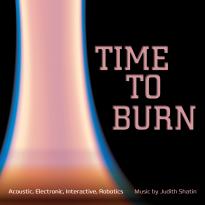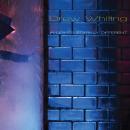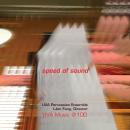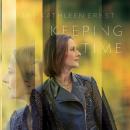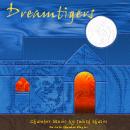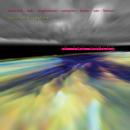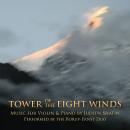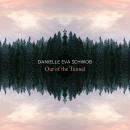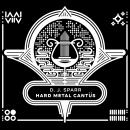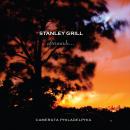Time to Burn
Time to Burn
Charlottesville, VA
| Time to BurniTunes Artist's PageiTunes Album Page | |||
|---|---|---|---|
| Song Title | Time | Price | |
| 1. | Glyph: I. Luminous | 06:40 | $0.99 |
| 2. | Glyph: II. Flickering | 02:02 | $0.99 |
| 3. | Glyph: III. Ecstatic | 06:44 | $0.99 |
| 4. | Glyph: IV. Incandescent | 03:41 | $0.99 |
| 5. | Time to Burn | 10:27 | |
| 6. | Grito del corazon | 05:20 | $0.99 |
| 7. | Sic Transit | 09:14 | $0.99 |
| 8. | Hoshech al P'ney HaTehom | 11:12 | |
| 9. | Elijah's Chariot | 19:43 | |
Time to Burn — Judith Shatin’s third solo CD for innova Recordings — presents a rich cross-section of her acoustic and electronic music. Called “highly inventive on every level; hugely enjoyable and deeply involving, with a constant sense of surprise” by The Washington Post, Shatin’s music combines vivid timbral hues with perceptually clear forms. “Glyph” (solo viola, string quartet and piano) opens the CD with a soaring performance by violist James Dunham, the Cassatt String Quartet and pianist Margaret Kampmeier.
On the title track, masterful oboist Aaron Hill and percussionists I-Jen Fang and Mike Schutz capture the explosive world Shatin created in response to the turmoil around us. The remaining four pieces show her inventive exploration of electronics and her mastery of their combination with acoustic instruments. “Hosech Al P’ney HaTehom (Darkness Upon the Face of the Earth)” is about a world being born — out of the subterranean darkness, lightning; out of chaos, life. It is also about a new world of sound, a music constructed from the basic DNA of sound, modulated sine waves.
Next is “Grito del Corazón (Cry of the Heart),” inspired by Goya’s powerful Black Paintings and commissioned by Ensemble Barcelona Nova Música. This version, for two clarinets and electronics, is performed with electrifying clarity by F. Gerard Errante and D. Gause. “Sic Transit” extends the electronic realm in a new direction, pairing I-Jen Fang with computer-controlled acoustic instruments. Scored for percussionist and CADI (Computer Assisted Drumming Instrument) — with six computer-controlled robotic arms — the piece finds Shatin playing with different levels of control, just as the events of our lives sometimes seem within our own control and sometimes beyond our control.
The CD closes with the Cassatt String Quartet’s affecting performance of “Elijah’s Chariot,” scored for amplified quartet and electronics made from processed shofar calls. Again, the music is suggestive of fire, this time the fiery chariot of Elijah rising up to Heaven.
HA'ARETZ
"….the wonderful music on this CD, and above all the opening work, Glyph (from 1984), which means a kind of carving.This work consists of beautiful, sweeping, imaginative music in four movements titled Luminous, Flickering, Ecstatic and Incandescent….This tonal, romantic music shows how little style is the measure of good music, and how one can write romantic music and be at the same time contemporary. True, this is not likely, but it is nevertheless possible – and rare as it may be, here the possible comes into being.
"Grito del Corazón (The Cry of the Heart) from 2001, for 2 clarinets and electronics, inspired by the Black Paintings of Francisco de Goya; Sic Transit, premiered in 2011, for percussionist and six robotic arms – whose repetitive rhythm moves from fulfillment of expectation to surprises, and explores our relation to time; and Hosech Al P’ney HaTehom for electronics, from 1990 – they too are beautiful works that reveal Shatin’s originality and her ability to say in sound something uniquely personal. Hosech Al P’ney HaTehom shows this: electronic music in which the noise of chaos moves and breaks as its sounds collide; and then a lightening flash triggers a wild storm, eruptions of lava, from which emerges a sound of definite pitch – and then stability…."
—Noam ben Ze'ev (translated by Michael Kubovy)
FANFARE
“Over the course of a mere 75 minutes, this disc introduces the listener to the sheer depth and variety of Judith Shatin’s music…..the first piece, Glyph (1984, for solo viola, string quartet, and piano), begins in rather welcoming fashion. This movement is marked 'Luminous' (the others are 'Flickering,' 'Ecstatic' and 'Incandescent'). The playing here by soloist James Dunham is stunning: resonant and vital. The first movement invokes large open spaces (of time, possibly, as well as space); the more spiky 'Flickering' offers excellent contrast and is superbly performed, especially in the virtuosity of the speedy pizzicatos. The ecstasy of the third movement is quite reverent in nature; the virtuosity of the beautifully, skillfully written finale is most satisfying."
—Colin Clarke
TERAPIJA
“….Her horizons and spectrums are very rich and impressive, and after you finish listening to the last, a very interesting and dramatic theme of 'Elijah Chariot'... the whole impression irresistibly compels you to press the replay key.” (Translated from Croatian by Mirela Savic-Fleming) [FULL ARTICLE]
FANFARE
"Judith Shatin is a true sound artist. She applies sound to the airwaves in the same way a painter applies colors to canvas. She is not trying for melodies that the listener will walk away singing, but she uses melodic material for dramatic effect….When you listen to her piece ['Elijah’s Chariot'], you feel as though you too are being swept up to Heaven by strong winds. Shatin’s music is powerful and most distinctive. As performed here and recorded in Innova’s clear sound, it is also most inviting. I think anyone who is interested in the creation of new music should sample her offerings."
—Maria Nockin
JAZZ WEEKLY
"Mixing electronic with acoustic music, Judith Shatin features piano, clarinets, percussion, oboe , strings and various electronics on this widely varied collection of what is essentially 21st Century classical music. A four piece 'Glyph' consists of eighteen minutes of piano that is at times melancholy, yearning and dizzying with The Cassatt String Quartet. Aaron Hill’s oboe sounds like a honking Khaen from Thailand on the percussive 'Time to Burn' while the electronics on 'Hoshech Al P’ney HaTehon' is filled with ominous moods. The closing 'Elijah’s Chariot' with The Cassatt String Quartet and electronics ends the album as a true Baal buster with lots of moments that are both cerebral and visceral." [FULL ARTICLE]
—George Harris
NEW MUSIC BOX
"Judith Shatin’s boldly titled disc, Time to Burn, furthers [the] idea of unique diversity—output that is extensively varied yet identifiably and singularly branded. Whether her compositions are atmospheric and talkative (such as Glyph, written in 1984 for solo viola, string quartet, and piano) or literally robotic (as in Sic Transit, written for percussionist and CADI—i.e. Computer Assisted Drumming Machine), Shatin always accesses a space that is conversational—between musical lines, instruments, and performers and audiences. She allows herself to be inspired by shared stories (e.g. Elijah and his entrance into Heaven in her piece Elijah’s Chariot, or as she describes in her program notes, the 'renewed holocausts' of the past decade 'driven by ethnic and religious hatred')." [FULL ARTICLE]
—Jordan Borg
